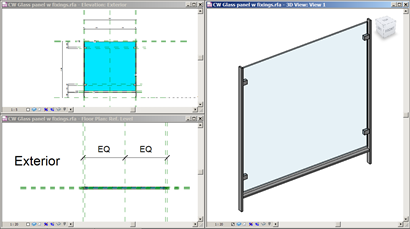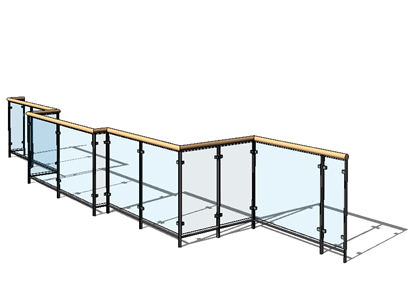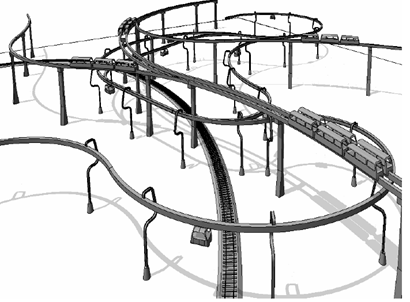I read with interest Steve Staffords recent blog with regards to the challenges of configuring railings and I have encountered similar issues. I was also surprised to see his statement about the use of railings in the early days having similar functionality as curtain walls.
Around 18 months ago I received a query from a Revit user who was having issues using one of the stock railing families which is supplied and can be found in the system family files when you install Revit Architecture. The user simply wanted to use system railing family called "Commercial - Glass w Fixings" on a balcony, however with all the will in the world he could not get the family to work correctly, especially as the balcony was not them deep.
In reality he may of been better off creating a custom family to suite the condition, but not every balcony on the project was identical. He also wanted to flexibility to rapidly change the design of the railing as required. So what I suggested was creating a custom curtain wall panel and nesting this into a curtain wall system. Then setting the curtain wall height to match the size of the railing he required. As this was only going to be used on a flat level, this was no big deal.
Custom Curtain wall panel:-
Completed Curtain wall system, as a 1100mm balcony railing:-
Now I can hear all those BIM purists out there shouting me down, saying, but a railing is a railing and a curtain wall is a curtain wall!!! Mr Light a curtain wall is not a railing! What about scheduling!!! Hey????
Now I agree will this, you should use the appropriate tools if you are going to use Revit as a complete BIM tool. But sometimes, you have to break the Revit rules to deliver the design solution and the graphics. In this particular case, the user was more interested in delivering the design and graphics and was less worried about the down stream scheduling benefits. This is a challenge with all us Revit users out there. It probably got more to do with the nature of architecture than anything else. Architects like to design things which are unique, so they can leave a mark on the public and provide a building which is compelling and exciting to look at and use. Revit provides us with an excellent set of tools which allows us to design and document buildings, but these tools only have a certain scope. This is why often I will look at using none standard Revit functionality to solve complex architectural solutions. I am aware of the downstream issues that this can cause and as long as you are aware of this, then to me this is fine. You only need to sit in on any of Phil Reads AU session on advanced Revit techniques and you will know what I'm getting at. :-)
If you want to take a look at the curtain wall railing file, it can be downloaded from here.










